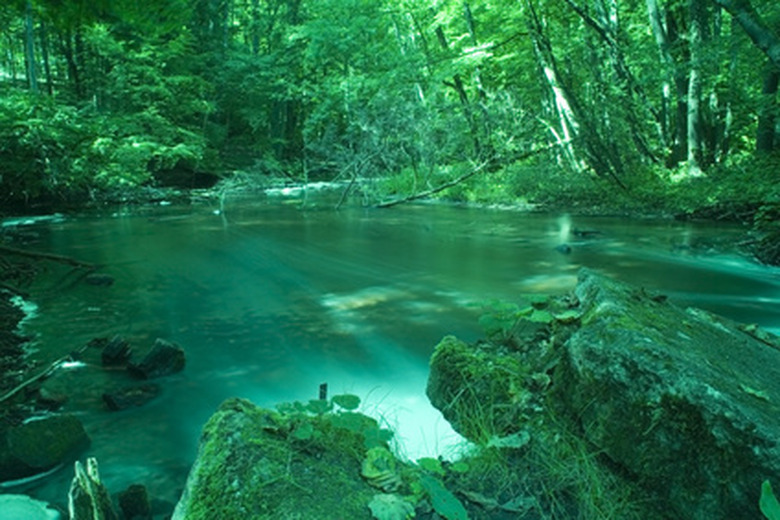How To Calculate Net Primary Productivity
Plants, algae and all organisms that use photosynthesis to produce energy support the vast majority of life on our planet. Photosynthesis allows these organisms to produce organic matter using sunlight as their primary energy source. Because they produce energy in the food web, researchers refer to these organisms as producers and study how much production occurs in a given area by calculating net primary productivity.
How Plants Produce Nutrients Using Photosynthesis
How Plants Produce Nutrients Using Photosynthesis
Before delving into how researchers calculate net productivity, you should understand how plants use photosynthesis to produce new biomass. Plants can produce brand new molecules of carbohydrates, sugars and lipids (organic molecules) by using only inorganic compounds. They take in sunlight, water, carbon dioxide and various minerals and produce new biomass in the food web.
However, even though plants take in carbon dioxide during photosynthesis, they also expel some carbon dioxide through respiration in the absence of sunlight. You'll want to remember this later when calculating net primary productivity.
Net Primary Productivity Definition
Net Primary Productivity Definition
What is net primary productivity? Net primary productivity (NPP) is the net amount of carbon produced by a plant or group of plants in a given period of time. Carbon dioxide entering the plant via photosynthesis and exiting the plant via respiration both factor into net productivity. Generally, the components of net primary productivity include the biomass the plant produces, the secretions from the roots of the plants and any losses to herbivores.
How to Calculate NPP
How to Calculate NPP
To calculate NPP, you take the total amount of carbon that the plant fixes (or turns into usable material) and subtract the amount of carbon lost during respiration. The total amount of carbon taken in by the plant is known as the gross primary productivity (GPP), and the amount of respiration is known as _Ra_.
This gives you the net primary productivity equation:
_NPP = GPP – Ra_
How to Calculate NPP: Example 1
How to Calculate NPP: Example 1
Though relatively simple when broken down into an equation, determining the net primary productivity can prove more challenging than plugging in a few numbers. No matter how exact you keep your experiment, you will have a hard time factoring in any energy that the plant produced to sustain itself, and you also won't be able to factor in any potential losses to small insects or other invertebrates.
With that in mind, scientists can perform experiments to come as close to the correct net productivity as possible. In one type of experiment testing the net productivity of algae in a pond, researchers use glass bottles and samples of water. They test the amount of dissolved oxygen prior to the experiment, seal and place the bottle back in the water, and then test the oxygen again after a period of time.
By taking the final amount of dissolved oxygen from the bottle and subtracting it by the initial amount, they can calculate the net primary productivity.
How to Calculate NPP: Example 2
How to Calculate NPP: Example 2
For terrestrial organisms, or those living on land, researchers generally use the biomass of the plants to determine their net primary productivity. However, as discussed previously, the exact net productivity will differ slightly from these results, as minor factors such as insect consumption can impact the amount of biomass produced.
You could measure the net primary productivity of a corn plant by planting a seed, allowing the plant to grow for an allotted period of time, and then removing the plant, including all leaves and roots, and allowing it to fully dry out to remove all water within the plant. Water will increase the weight and skew your data. The total mass of the dried plant provides a good estimate of the net primary productivity.
Cite This Article
MLA
Zinni, Yasmin. "How To Calculate Net Primary Productivity" sciencing.com, https://www.sciencing.com/how-to-calculate-net-primary-productivity-12399364/. 30 September 2021.
APA
Zinni, Yasmin. (2021, September 30). How To Calculate Net Primary Productivity. sciencing.com. Retrieved from https://www.sciencing.com/how-to-calculate-net-primary-productivity-12399364/
Chicago
Zinni, Yasmin. How To Calculate Net Primary Productivity last modified March 24, 2022. https://www.sciencing.com/how-to-calculate-net-primary-productivity-12399364/
